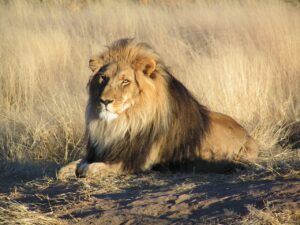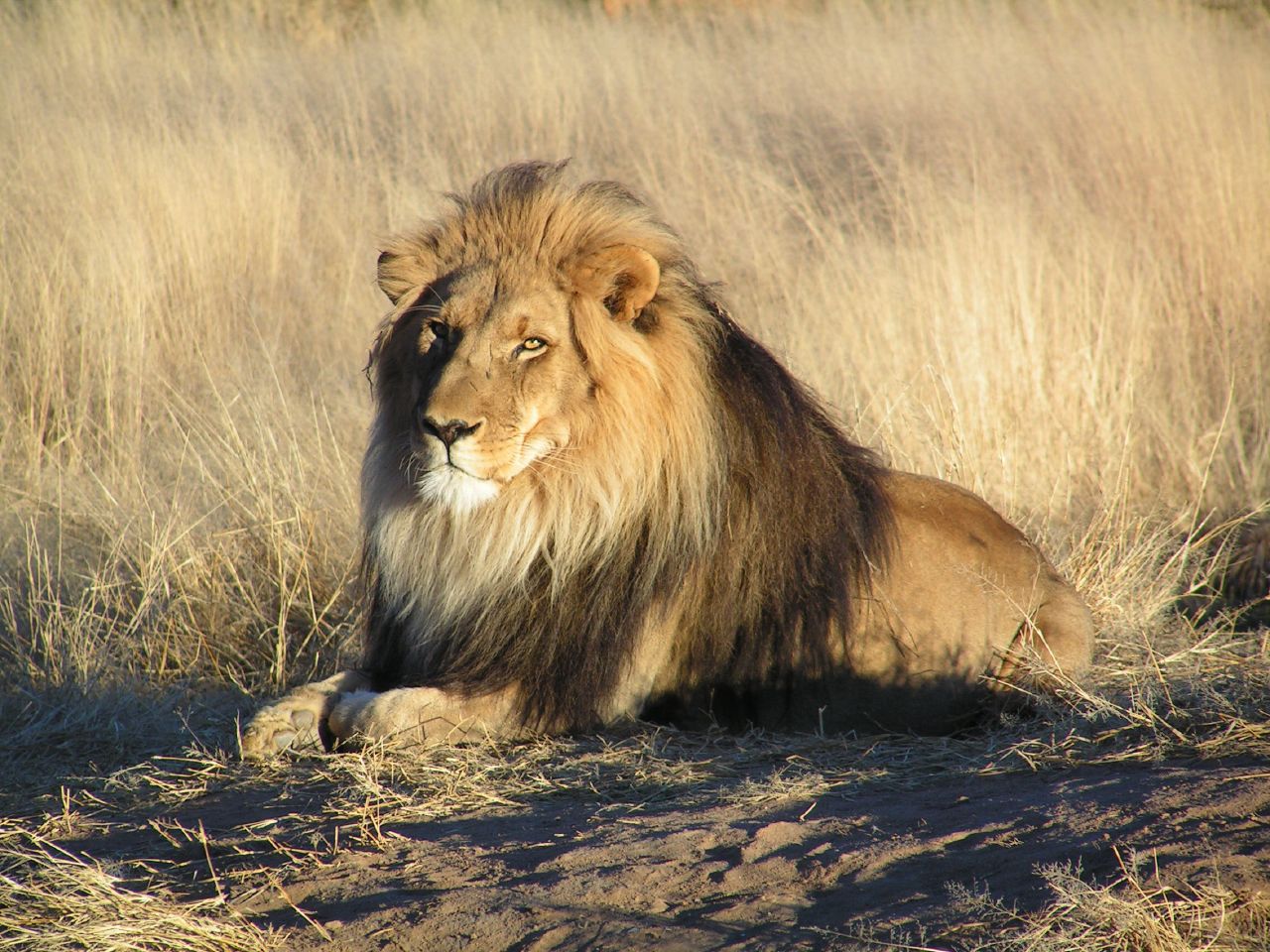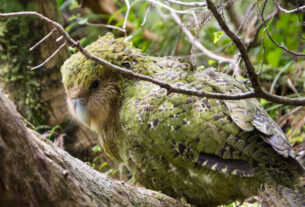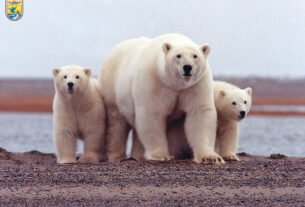In the vast savannas of Africa and the rugged terrain of India, one animal reigns supreme as the undisputed monarch of the animal kingdom—the lion. Often referred to as the “King of the Beasts,” the lion embodies a blend of majesty, power, and regality that has captivated human imagination for centuries. From ancient myths and cultural symbols to modern-day wildlife conservation efforts, lions have carved out a significant place in our collective consciousness. Their awe-inspiring presence and majestic appearance have made them icons of strength and nobility, deeply embedded in art, literature, and heraldry.
This article delves into the fascinating world of lions, exploring their physical characteristics, social behaviors, and cultural significance. Through a closer look at their lives in the wild, the challenges they face, and their profound impact on human culture, we uncover the true essence of what makes the lion a symbol of grandeur and power. Join us as we journey into the heart of the lion’s domain and discover why this magnificent creature continues to capture the admiration and respect of people around the globe.

(wikipedia.org)
Physical Characteristics
(Size and Appearance)
Lions are among the largest members of the big cat family, with males standing out due to their impressive size and commanding presence. Adult male lions typically weigh between 330 to 550 pounds (150 to 250 kilograms) and can measure up to 10 feet (3 meters) in length from their head to the tip of their tail. This substantial body mass contributes to their role as apex predators, providing the strength and power needed to take down large prey and assert dominance within their territory. Female lions, while smaller, are still quite formidable, weighing between 260 to 400 pounds (120 to 180 kilograms) and having similarly powerful physiques that support their vital roles within the pride.
Male lions are renowned for their distinctive manes, which can vary significantly in color, ranging from light tan to deep brown. The mane, which can extend from the lion’s neck down to its chest and shoulders, is one of the most recognizable features of the species. This mane not only enhances the lion’s majestic appearance but also plays several important roles. It serves as a visual signal of the male’s strength and vitality, which can be crucial in attracting potential mates and deterring rivals. The size and color of the mane can be influenced by factors such as age, genetics, and overall health, with darker and fuller manes often indicating higher levels of testosterone and a more dominant position in the pride.
(Distinctive Features and Functions)
The mane also provides practical benefits beyond its role in social signaling. It offers some protection during physical confrontations with other lions, shielding the neck and throat from bites and scratches during fights. This protective function is particularly important given the frequent territorial disputes and battles for dominance that occur between male lions. Additionally, the mane may help to regulate body temperature by providing insulation against cold weather and shielding the lion from the sun’s rays during hot periods.
Lions possess several other distinctive physical traits that support their role as apex predators. Their muscular bodies are built for power and endurance, allowing them to run at speeds of up to 35 miles per hour (56 kilometers per hour) in short bursts to catch prey. They have large, robust paws equipped with retractable claws, which are essential for gripping and holding onto their prey. Their powerful jaws and sharp teeth, including large canine fangs, are adapted for delivering lethal bites and tearing flesh. Lions also have keen senses, including excellent night vision, which aids them in hunting and navigating their territory, especially during low-light conditions. These combined physical attributes contribute to the lion’s status as one of the most formidable and influential predators in the animal kingdom.
Overall, the physical characteristics of lions, from their impressive size and distinctive mane to their powerful hunting adaptations, reflect their status as apex predators. These traits not only enhance their ability to dominate their environment but also play crucial roles in their social interactions and survival strategies.
Behavior and Social Structure
(Social Structure)
Lions are remarkable among big cats for their social nature, forming complex groups known as prides. A pride typically includes multiple related females, their cubs, and a few resident males. The pride’s structure facilitates cooperative behaviors that are vital for their survival and success. Female lions, or lionesses, are usually related to one another, which strengthens familial bonds and ensures that they work together effectively in various activities, such as hunting and cub-rearing. These bonds are critical for the pride’s cohesion and operational efficiency.
Resident males, usually comprising one to three individuals, play essential roles in protecting the pride’s territory and maintaining order within the group. These males often form alliances with other males, creating coalitions that help them challenge and defend against rival prides. When new males take over a pride, they might evict or kill the existing cubs to bring the females into estrus, ensuring that their own offspring have a chance to succeed. This behavior is a strategy to propagate their genes and secure dominance within the pride.
(Behavioral Dynamics)
The behavior of lions within a pride is characterized by a range of activities that support their social structure and enhance their survival. Cooperative hunting is a primary example, where lionesses work together to track, stalk, and ambush prey. This teamwork increases their chances of a successful kill and allows them to take down large prey, such as zebras and wildebeests, which would be difficult for a single lion to capture alone. The hunting process involves careful coordination, with different members of the pride taking on specific roles during the hunt.
In addition to hunting, social interactions within the pride are crucial for maintaining harmony and strengthening bonds. Grooming is a common behavior that helps to reinforce social connections and remove parasites. Play behavior, particularly among cubs and young lions, is essential for developing hunting skills and social competencies. Roaring is another significant behavior, used to communicate over long distances, assert territorial boundaries, and coordinate group activities. These vocalizations also play a role in maintaining social cohesion within the pride.
(Territorial Behavior)
Lions are highly territorial, and their pride’s territory is actively defended against other lions and potential threats. The size of a territory can vary widely, from 20 to 400 square miles (50 to 1,000 square kilometers), depending on factors such as prey density and habitat quality. Territories are marked using scent from urine, feces, and glandular secretions, creating a scent trail that serves as a warning to other lions. Roaring also acts as a vocal marker of their presence, helping to establish and reinforce territorial boundaries.
Territorial disputes can be intense and involve physical confrontations between rival males or between prides. These conflicts often occur when new males or rival prides attempt to encroach on established territories. Territorial behavior is crucial for managing resources and maintaining the pride’s stability. During times of resource scarcity, lions may extend their range in search of food and water, sometimes crossing into neighboring territories. Conversely, when resources are abundant, they may restrict their movements to conserve energy and protect their territory.
(Social Hierarchies and Cub Rearing)
Within the pride, social hierarchies are established based on age, experience, and sometimes physical strength. Older and more experienced females typically have higher social status and play leading roles in hunting and cub-rearing. Cubs are raised collectively, with all the females in the pride participating in their care and protection. This cooperative rearing helps to ensure the survival of the young and allows the pride to maintain its social structure and cohesion.
Overall, the behavior and social structure of lions are intricately linked to their roles as apex predators and social animals. Their complex social organization, territoriality, and cooperative behaviors contribute to their success in the wild, allowing them to thrive in a variety of habitats and maintain their dominance within their ecosystems.
Conservation Status and Challenges
(Current Status and Threats)
Despite their iconic status and significance in various cultures, lions are facing severe threats that have led to a dramatic decline in their populations. Historically, lions once roamed across a vast range that extended from Europe and the Middle East to sub-Saharan Africa. However, their current distribution is now confined to a fraction of this range, predominantly in sub-Saharan Africa with a small population in the Gir Forest of India. The dramatic reduction in their range is attributed to a combination of habitat loss, poaching, and human-wildlife conflict.
Habitat loss is a major driver of this decline, primarily due to human activities such as agricultural expansion, deforestation, and urbanization. As human populations grow and expand into previously wild areas, lion habitats are increasingly fragmented and degraded. This not only reduces the available space for lions but also disrupts the ecological balance of their environment, leading to a decrease in prey availability and an increase in human-lion conflicts. Additionally, the conversion of land for agriculture and infrastructure development often results in the loss of critical resources such as water and prey, further exacerbating the challenges faced by lions.
Poaching is another significant threat to lion populations. Lions are targeted for their body parts, which are used in traditional medicine, as trophies, or sold in illegal wildlife trade markets. The demand for lion bones and other body parts has increased, particularly in some Asian markets, where they are believed to have medicinal properties. This illegal trade undermines conservation efforts and contributes to the decline in lion numbers. Moreover, retaliatory killings by farmers and ranchers who view lions as a threat to their livestock add to the pressure on lion populations. These conflicts often result in lions being killed or driven away from their habitats, further diminishing their chances of survival.
(Conservation Efforts)
To combat these threats and secure a future for lions, a range of conservation efforts are being implemented. One prominent initiative is the “Lion Recovery Fund,” which aims to double the number of lions in the wild by supporting on-the-ground conservation projects. This fund provides financial and logistical support to organizations working to protect lion habitats, enhance anti-poaching measures, and promote sustainable land-use practices. By focusing on key areas such as habitat restoration, wildlife protection, and community engagement, the Lion Recovery Fund seeks to address the multiple factors contributing to the decline of lion populations.
Wildlife reserves and protected areas play a crucial role in conservation by providing safe havens for lions where they can live and reproduce without the immediate threat of human encroachment. These areas often implement strict anti-poaching measures, including patrols and surveillance, to prevent illegal hunting and trafficking. Conservationists also work closely with local communities to raise awareness about the importance of lion conservation and to develop strategies for mitigating human-wildlife conflicts. Education programs and community engagement initiatives aim to foster coexistence between lions and local people, emphasizing the benefits of protecting lions as a key part of the ecosystem.
Furthermore, international cooperation and policy advocacy are essential components of lion conservation. Efforts to strengthen and enforce wildlife protection laws, combat illegal wildlife trade, and support conservation research are critical for ensuring the long-term survival of lions. Organizations and governments are working together to develop and implement policies that safeguard lion habitats, support conservation funding, and promote sustainable development practices. By addressing the complex challenges facing lions through a multifaceted approach, there is hope for reversing their decline and securing a future for these magnificent predators.
Overall, while the challenges facing lions are substantial, ongoing conservation efforts provide a pathway to restoring their populations and ensuring their survival. Through habitat protection, anti-poaching measures, community engagement, and international collaboration, it is possible to create a more secure and sustainable future for lions in the wild.
Cultural Significance
(Historical Reverence)
Lions have held profound cultural significance across various civilizations throughout history, symbolizing a blend of power, protection, and divine authority. In ancient Egypt, lions were emblematic of strength and sovereignty, often depicted in art and sculpture to represent the might of pharaohs and the gods. The lion-headed goddess Sekhmet, a deity associated with war and healing, was revered for her formidable presence and protective qualities. Her depiction as a lioness underscored the creature’s association with both fierceness and benevolence. Statues and carvings of lions were strategically placed at temple entrances and tombs to guard against malevolent forces and ensure the sanctity of sacred spaces.
In Greek mythology, the Nemean Lion stands as a symbol of immense strength and resilience. The beast, known for its nearly impenetrable hide, terrorized the region of Nemea, challenging anyone who dared confront it. Hercules, one of mythology’s greatest heroes, was assigned the task of slaying the lion as one of his twelve labors. The lion’s defeat not only demonstrated Hercules’ extraordinary skill and courage but also symbolized the triumph of human perseverance over seemingly insurmountable challenges. The Nemean Lion’s legend reinforced the notion of lions as powerful and almost supernatural adversaries, embodying qualities of invincibility and endurance.
(Modern Symbolism)
In contemporary culture, lions continue to serve as powerful symbols of nobility, strength, and leadership. Their image pervades literature, films, and heraldry, where they are often associated with themes of courage and valor. In literature, the lion Aslan from C.S. Lewis’s The Chronicles of Narnia embodies bravery, justice, and sacrifice, offering readers a portrayal of the lion as a noble and wise leader. Similarly, Disney’s The Lion King presents Simba as a regal and inspiring figure, highlighting the lion’s role as a symbol of rightful leadership and resilience. These portrayals emphasize the lion’s enduring appeal and its capacity to inspire across generations.
The lion’s presence extends into sports and national symbols, reflecting its status as a universal emblem of strength and pride. The English football team’s emblem, known as the “Three Lions,” represents the nation’s competitive spirit and historical legacy. Similarly, lions appear in the crests and coats of arms of numerous institutions and countries around the world, symbolizing qualities such as bravery, leadership, and excellence. The use of lions in these symbols underscores their longstanding significance and the deep cultural resonance they hold. The lion’s enduring legacy as a symbol of power and nobility is a testament to its timeless influence on human culture and imagination.
Overall, the lion’s cultural significance spans millennia, reflecting its role as a symbol of strength, courage, and leadership across various contexts. From ancient deities and mythical creatures to modern-day symbols of excellence and bravery, the lion’s image continues to captivate and inspire, affirming its place as a powerful and enduring icon in the tapestry of human history.
Conclusion,
The lion’s regal presence and formidable nature have earned it a place of reverence and awe across cultures and eras. As the “King of the Beasts,” the lion embodies strength, courage, and leadership, qualities that have been celebrated in ancient myths, modern media, and heraldic symbols. Its role as an apex predator and a symbol of power reflects its importance not only in the animal kingdom but also in human culture.
Despite its majestic status, the lion faces significant threats from habitat loss, poaching, and human-wildlife conflicts. The stark decline in lion populations underscores the urgent need for comprehensive conservation efforts. Protecting these magnificent creatures requires a concerted effort to safeguard their habitats, prevent illegal hunting, and foster coexistence with local communities.
As we strive to ensure the survival of lions, it is essential to remember the profound impact they have on our collective imagination and cultural heritage. By supporting conservation initiatives and fostering greater awareness, we can help preserve the legacy of the lion for future generations. In doing so, we honor the enduring spirit of the lion, whose roar continues to echo as a symbol of majesty and strength in the wild.




